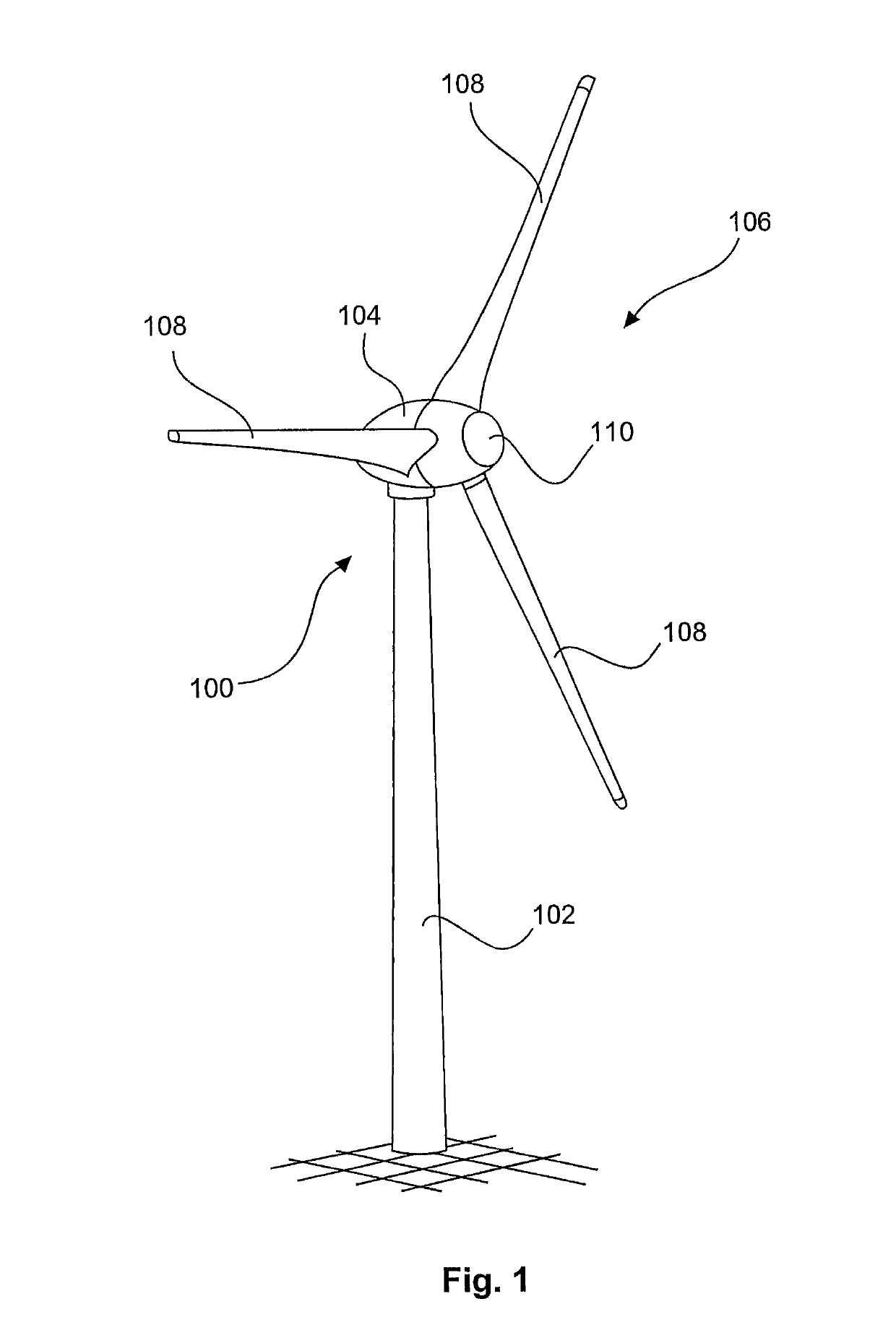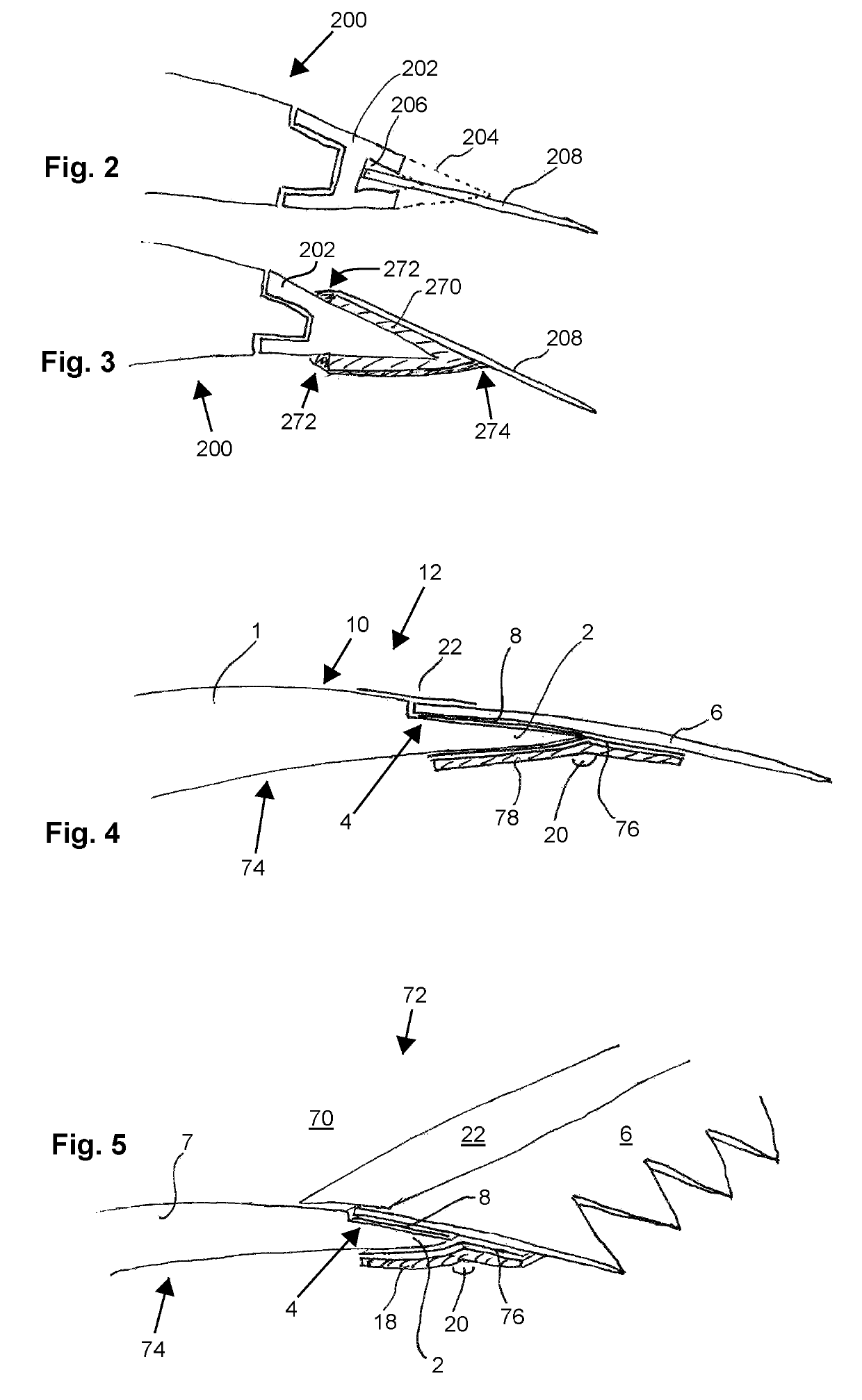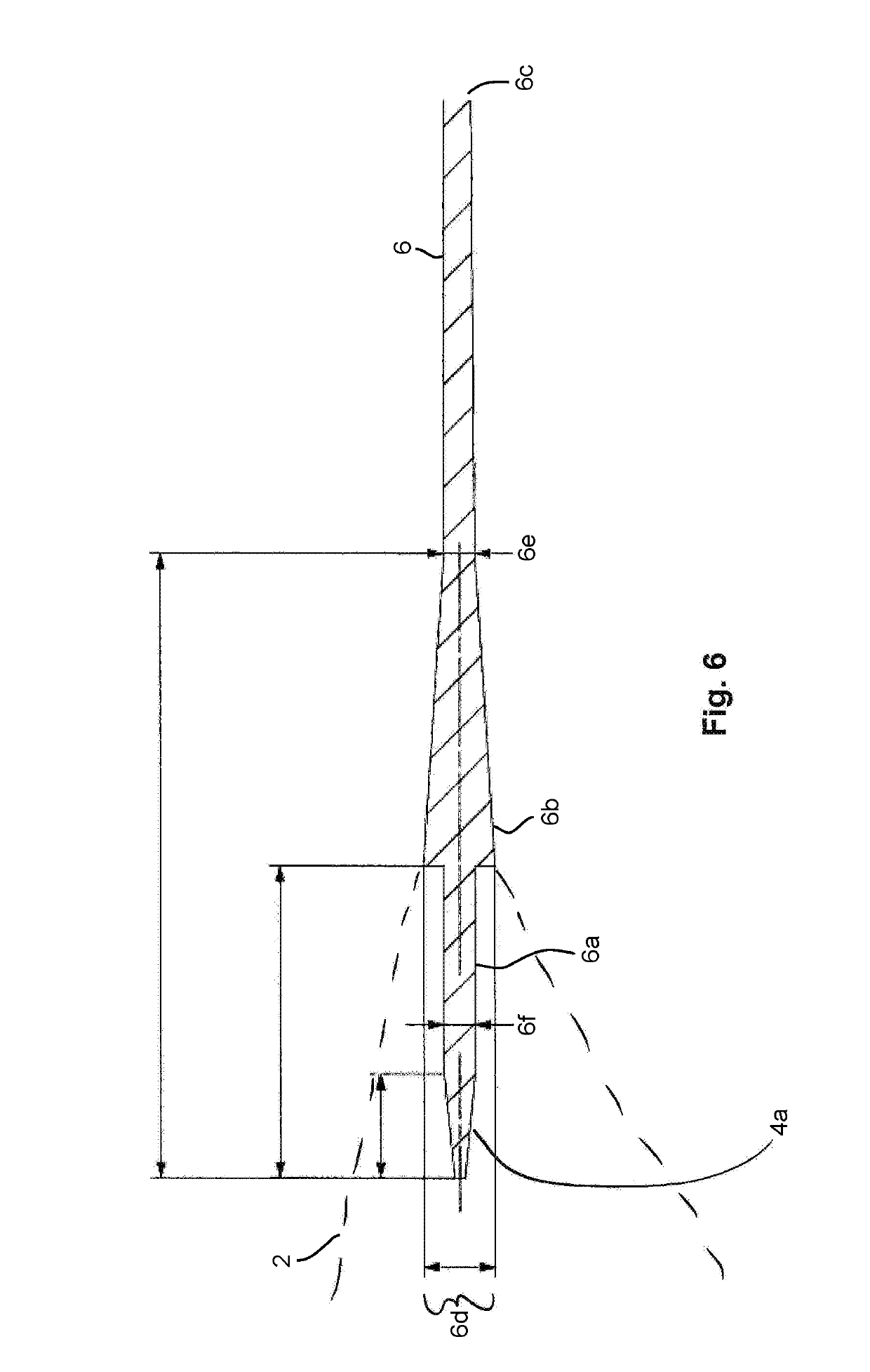Method for attaching a toothed rear edge to a blade rear edge of a rotor blade
a technology of rotor blade and rear edge, which is applied in the field of method for attaching a rear edge to a blade rear edge of a rotor blade, can solve the problems of disadvantageous methods for retrofitting, and achieve the effect of convenient access
- Summary
- Abstract
- Description
- Claims
- Application Information
AI Technical Summary
Benefits of technology
Problems solved by technology
Method used
Image
Examples
Embodiment Construction
[0033]FIG. 1 shows a wind turbine 100, having a tower 102 and a nacelle 104. A rotor 106, having three rotor blades 108 and a spinner 110, is disposed on the nacelle 104. When in operation, the rotor 106 is put into a rotary motion by the wind, and thereby drives a generator in the nacelle 104.
[0034]FIG. 2 shows a rear part of a rotor blade 200, having a mounted-on rear edge 202. FIG. 2 and, additionally, also FIGS. 3 and 4 show lateral sectional views, in which, for reasons of greater clarity, not all sectional surfaces are shown with hatching. The rear edge 202 originally tapered to a point, as the broken lines 204 are still intended to indicate. The rear edge 202 also had an interior cavity 206. For the purpose of attaching a serrated rear edge 208, the mounted-on edge 202 has been sawn open, such that the cavity 206 was made accessible. The serrated rear edge 208 could thus be inserted in the cavity 206 and attached there.
[0035]FIG. 3 shows a variant in which a rear edge 202 wit...
PUM
 Login to View More
Login to View More Abstract
Description
Claims
Application Information
 Login to View More
Login to View More - R&D
- Intellectual Property
- Life Sciences
- Materials
- Tech Scout
- Unparalleled Data Quality
- Higher Quality Content
- 60% Fewer Hallucinations
Browse by: Latest US Patents, China's latest patents, Technical Efficacy Thesaurus, Application Domain, Technology Topic, Popular Technical Reports.
© 2025 PatSnap. All rights reserved.Legal|Privacy policy|Modern Slavery Act Transparency Statement|Sitemap|About US| Contact US: help@patsnap.com



